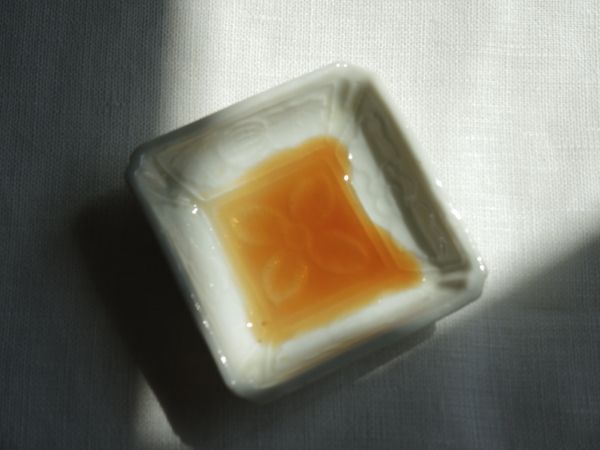魚醤
2015.03.17 │ ブログ
20代の頃、旅先のラオスで出会った女の子が、
おばあさんのおうちに私を連れて行ってくれた。
その家の庭には大きなつぼがあって、その中には小さな魚が塩漬けになっていた。
「これ、おばあちゃんが作ったナンパーよ。味をみてみる?」
魚臭さとは無縁のいい香り。透き通ったきれいな色。そして芳醇な味。
ほんとうの魚醤ってこういうものなんだ!と驚いた。
タイのナンプラー、ベトナムのヌクマム、イタリアのコラトゥーラ(ガルム)など、
世界に有名な魚醤がいろいろあるけれど、
実は私たちの国にも古くから作られている魚醤がある。
能登のいしる、秋田のしょっつる。
どちらも、現地でそれらを使った郷土料理を食べたことがあるけれど、
正直そのときはピンとこなかった。
何がピンとこなかったかと言えば、
それらを東京での日常の中で使っている自分が。
でも今、私はあらためて日本の魚醤を見直しているんです。
そのことについては、また明日。
///////////////////////////////////////////////////////////////////////
FISH SAUCE
When I traveled in Lao in my twenties, the girl who I met there took me to her grandmother’s house.
There was a large earthware pot in her garden.
In the pot, a lot of little fishes were salted and fermented.
“This is Nampaa my grandma made. Do you wanna taste?”
Good smell that never stink , clear beautiful color, and mellow taste…
I was amazed that how the real fish sauce was.
Many people around the world are familiar with Nam pla from Thailand, Nooc mam from Vietnam, Garum(Colatura) from Italy and so on.
We Japanese also have ancient fish sauce such as “Ishiru” from Ishikawa, “Shottsuru” from Akita.
Unfortunately we usually don’t use these Japanese fish sauces today.
I have eaten the local dishes with these fish sauces there, but to tell the truth, I couldn’t imagine I would use that in my kitchen in Tokyo then.
But now I discover new merit of Japanese fish sauce.
I’ll write about it tomorrow…
posted by Misato





